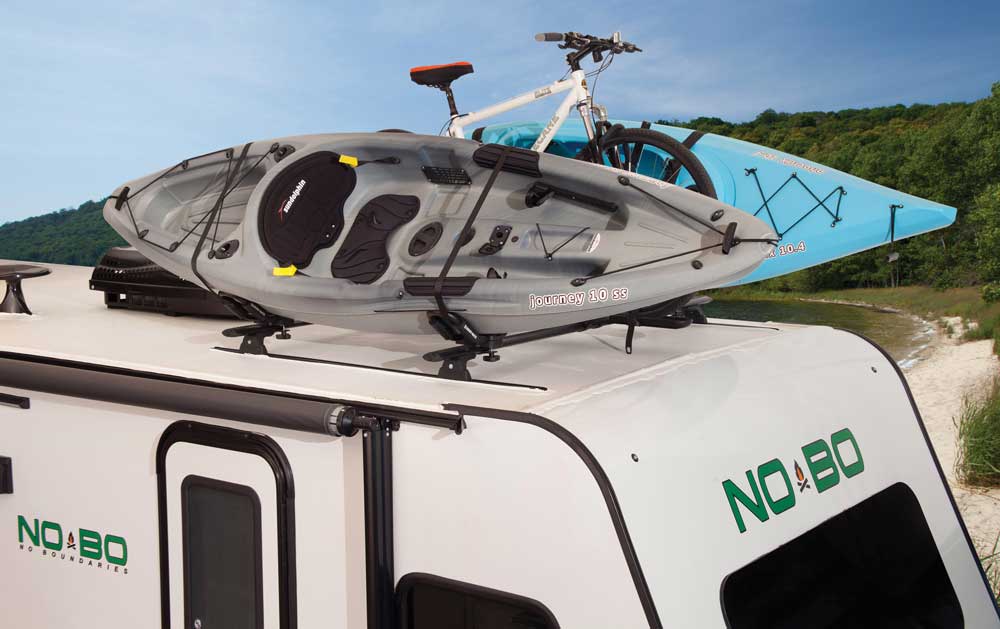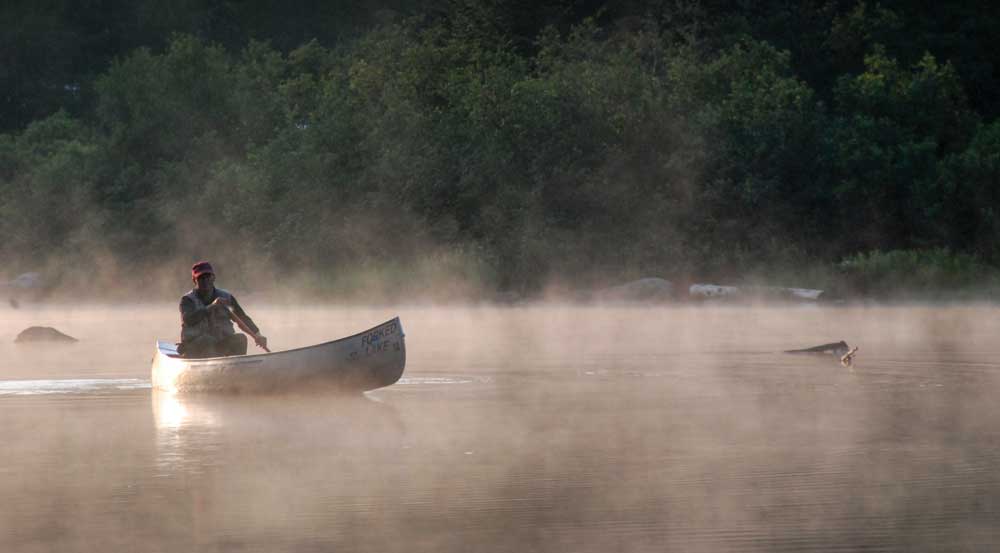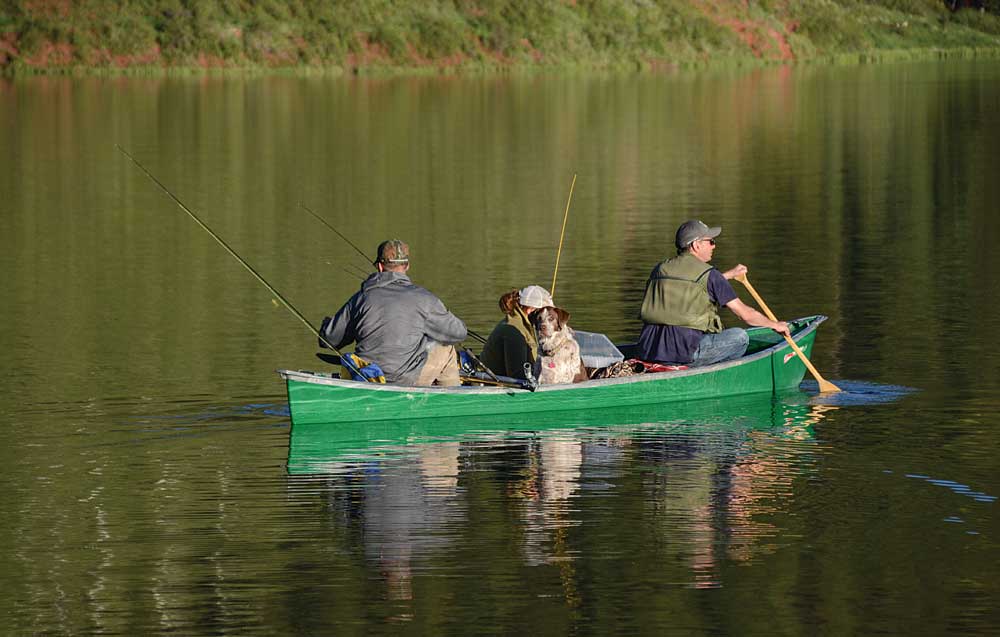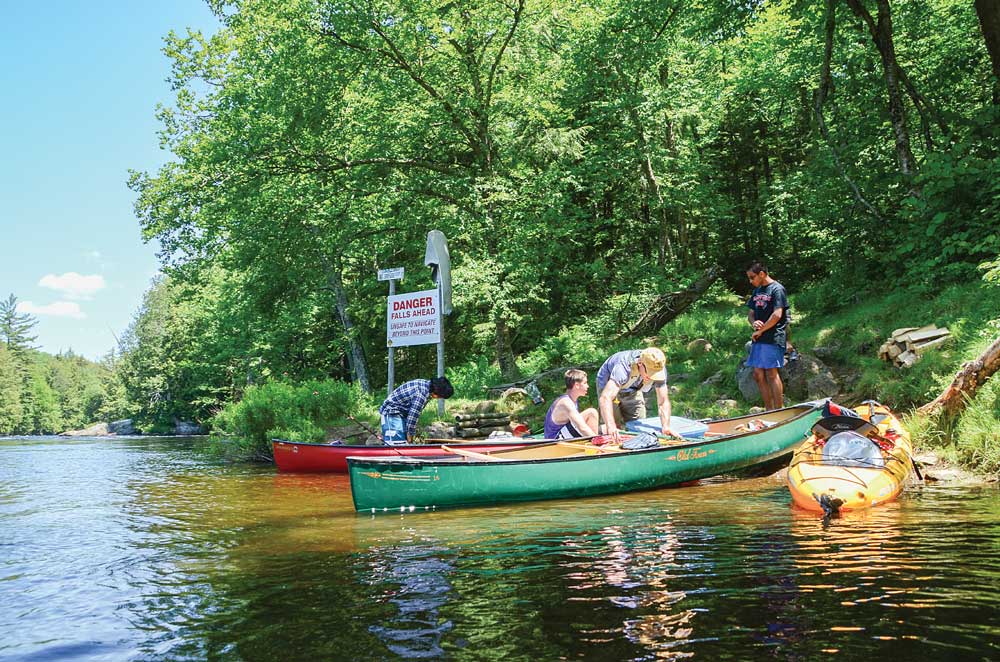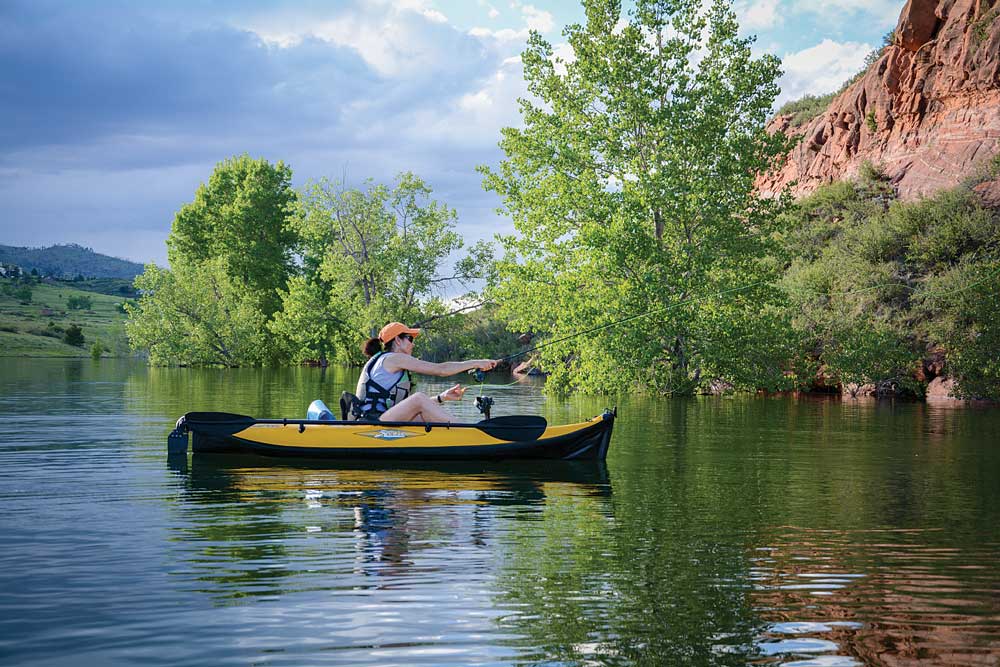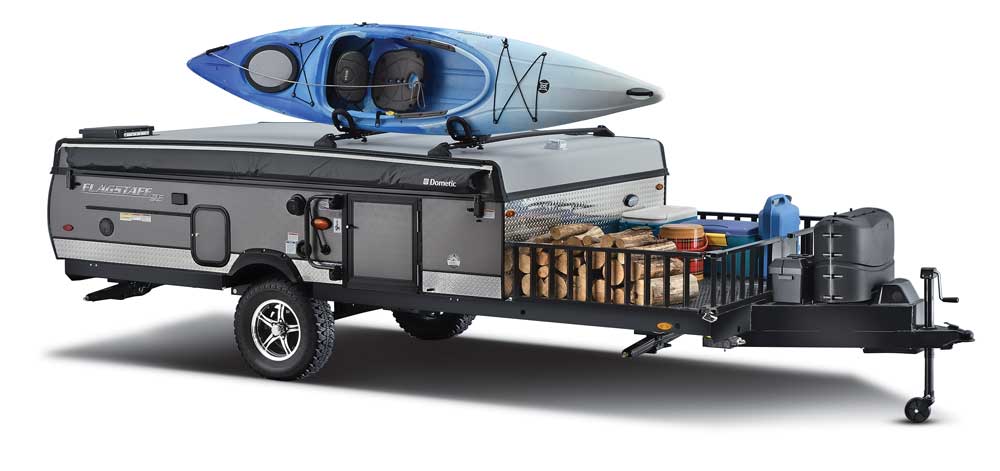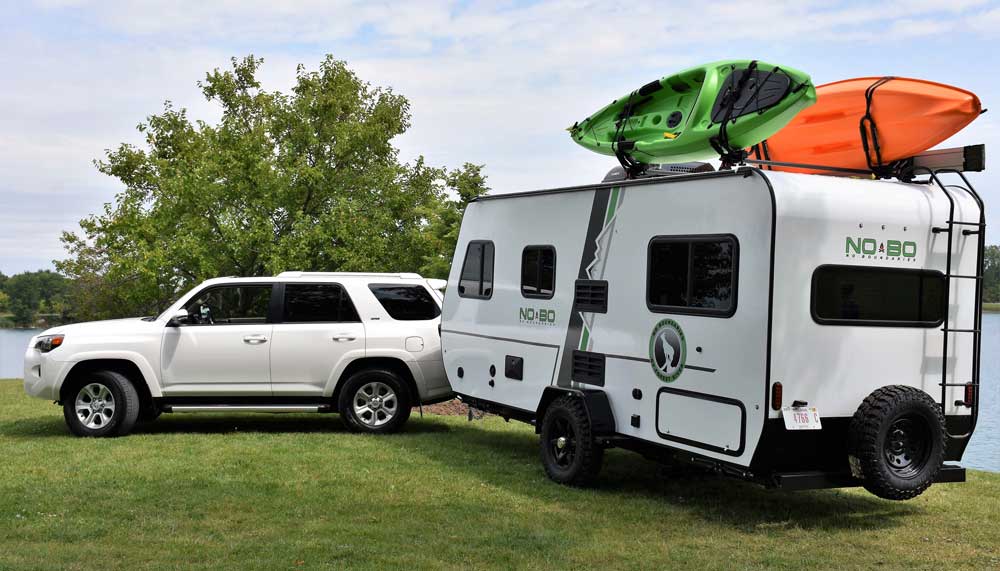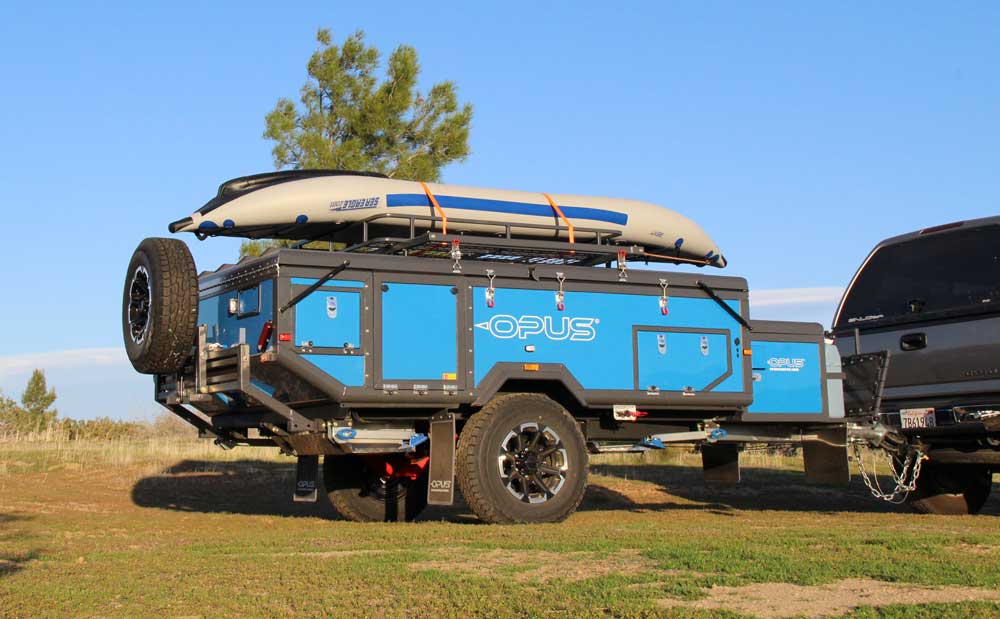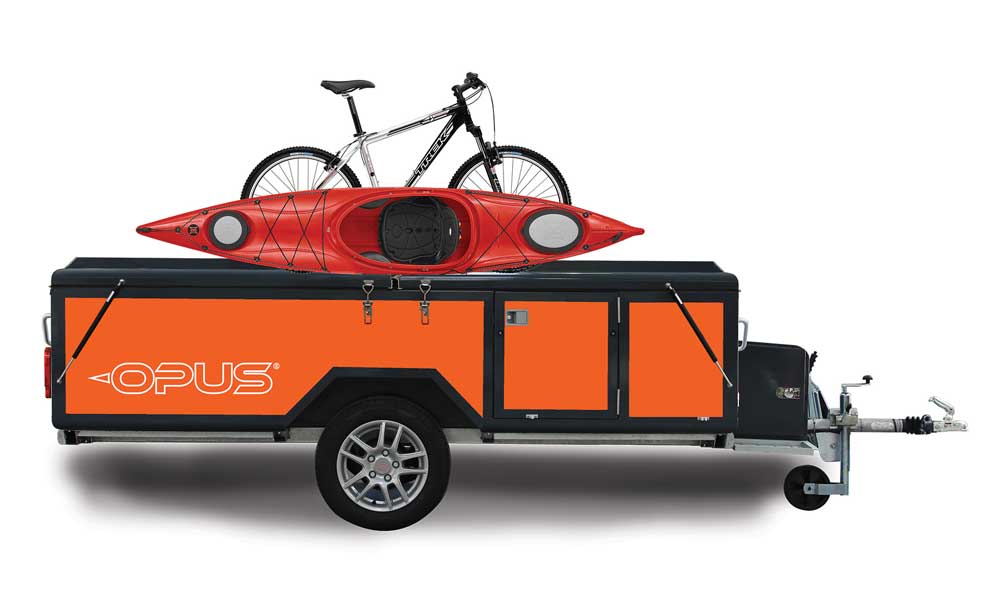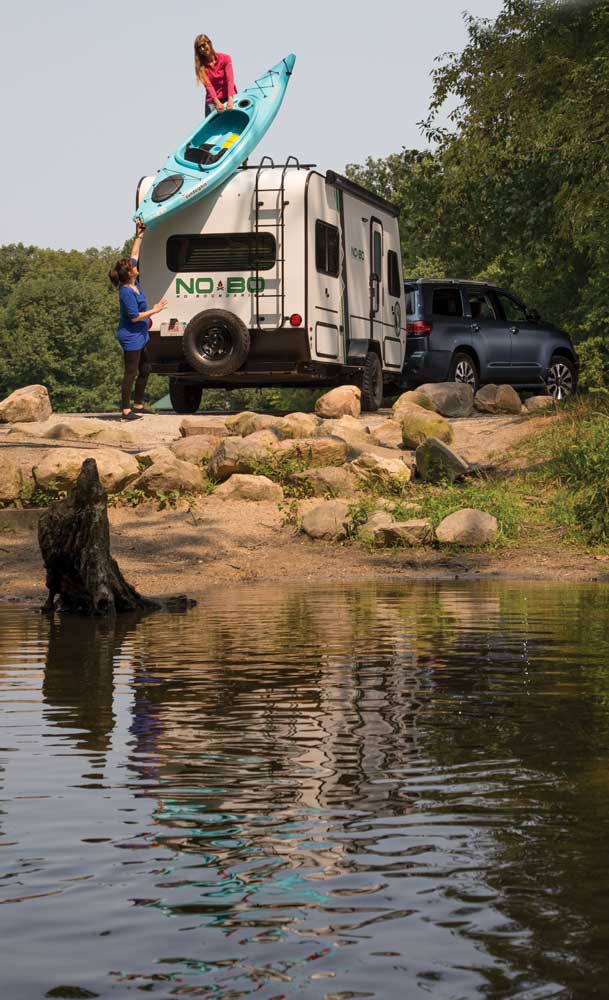Whether you row, row, row your boat or balance atop an SUP, playing in the water keeps you in shape while reveling in the fresh air and communing with nature
In Mark Twain’s colossal classic of American literature, Huck Finn uses a canoe to escape on the Mississippi River from his drunken, abusive father. The Adventures of Huckleberry Finn proceeds with the young Huck engaged in an outlandish sequence of experiences, eventually adding a raft and a partner (Jim, a runaway slave) to his canoe. Throughout the tale, the canoe and the raft represent the means of escape from the tangles of human civilization to a life of freedom and ease on the river.
See Related Story: RV-Friendly Watercraft
Should the adolescent adventurer of Twain’s novel make a similar run to the river in current times, his options in hand-powered watercraft would span far more options than a traditional canoe. Scores of modern paddlers take to the water each spring and summer, often motivated by the same feelings of health, independence and communion with nature that continually lured Huck Finn back to the Mississippi. Some paddle canoes, but others hop in kayaks or glide across the water standing atop an SUP (stand-up paddleboard).
Muscle-propelled crafts have increased in popularity over the past decade for their fitness benefits, portability and outright fun. For RVers they represent an escape to the water without the logistic headaches often accompanying motorized watercraft. With a canoe, kayak or SUP, there’s no gas to buy, boat ramp to worry about or towing hassles. Simply select the craft that best fits your RV setup and hit the water.
Here’s a quick rundown of the options.
With a canoe, kayak or SUP, there’s no gas to buy, boat ramp to worry about or towing hassles. Simply select the craft that best fits your RV setup and hit the water.
Canoes
Despite the popularity of modern competitors in the form of kayaks and SUPs, a traditional canoe remains an ideal hand-powered craft for a number of reasons. Most models accommodate two paddlers, with enough room on board for gear, a couple of children and even a well-behaved dog.
My kids’ earliest introduction to paddling came when my two boys were yet to enter kindergarten. I secured two small stadium seats to a length of plywood nestled in front of the center crossbar on our broad-beamed Old Town canoe. There they rode in style on many floats down lazy rivers and angling excursions on quiet lakes where they caught their first fish.
At the present time, one of my favorite paddling activities includes multiday camping and floating trips on rivers in New York’s Adirondack Park. For those, my wife and I invariably take to our sleek, 17-foot canoe that paddles quite easily on lakes yet maneuvers nimbly enough to navigate area rivers. It carries all the gear necessary for a comfortable camp and the family dog. What’s not to like about a traditional canoe?
Prior to purchasing my own boat, I figured canoes were canoes. Once I started doing research before buying my own craft, I learned that there’s an almost overwhelming number of options related to length, width, material, construction and shape — all of which greatly affect the usefulness of a particular design.
At the danger of oversimplification, let’s start by noting that long, narrow canoes are generally easier to paddle on lakes and ponds. However, they’re more prone to tipping and are harder to maneuver on streams. In addition, the paddling characteristics of a canoe are affected by its “rocker,” which means the shape of its bottom. Canoes with rockers have a slightly wedge-shaped bottom (deeper in the center than the front and rear), which make them easier to turn but harder to paddle.
Safety First: Personal Flotation Devices
Every user of a canoe, kayak or SUP should be equipped with an appropriate PFD. Because paddling requires unrestricted arm movement that’s not required with recreational motorized boating, be sure to try on your PFD before you buy. It should fit snugly but allow the arms to move freely. If it rides up under the armpits, beware. A poorly fitting PFD can quickly become as annoying and uncomfortable as shoes that are a size too small.
Other buying considerations include weight, material and load capacity. Generally speaking, more expensive canoes boast less weight and greater durability. A low-priced family canoe may weigh 90 pounds and cost $700. A $1,200 model may be constructed of lighter, long-lasting material and balance the scale at just 70 pounds. Is 20 pounds worth $500? If you plan to use the canoe on trips that require portaging (carrying the craft from one waterbody to another or around river hazards such as waterfalls), it certainly is. Otherwise, that’s a question best answered after you’ve hoisted your boat on and off the top of your vehicle a couple dozen times.
For my first purchase, I chose a mid-priced canoe that was very wide and relatively short. The width made it safe and stable for my preschool kids and easy to turn. However, it was certainly tougher to paddle on flat water (lakes). But we tended to spend most of our time on calm rivers, so the craft suited us just fine.
Juggling considerations of intended use and load capacity (which is primarily a function of width and length) are all part of the equation when making an intelligent canoe choice. Learning to handle the craft is the next step. Instructional books and trial-and-error have guided some adroit canoeists, but a few hours of coaching via a class or experienced mentor are the quickest ticket to gaining the essential skills.
Of the three types of crafts, a canoe is perhaps the most difficult to transport. If you have a toy-hauler camping trailer, a shorter canoe may stow inside. Otherwise the easiest means of transport is to put it on the rooftop of the towing vehicle or trailer, ideally on a roof rack.
Kayaks
Kayaks have been around for at least 4,000 years, their origin tracing to the aboriginal peoples of the far north. Quiet, efficient to paddle and capable of handling rough seas, kayaks were used by Inuit and Aleutian peoples primarily as hunting vessels, but also for general travel. Early kayaks were comprised of animal skins stretched over a wooden frame. Nowadays, plastics, fiberglass and other high-tech materials have replaced hide and wood in kayak construction.
Designs have also proliferated. From sit-on-top to traditional sit-inside models, kayaks come in a dizzying array of size, shape and color. The choices are also expanded by the many inflatable kayaks that are perfectly serviceable yet store in a corner closet
or storage compartment in an RV.
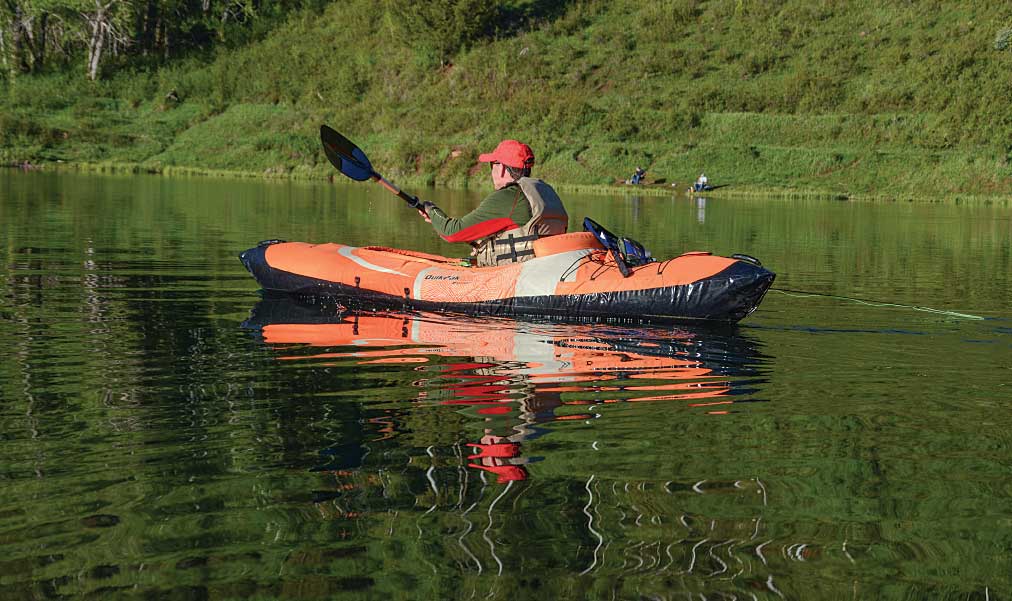
Inflatable watercraft, like this kayak, are completely functional and fit easily in an average RV’s exterior storage compartment. Setup time goes quickly, and you’ll get better with practice.
The same principles of propulsion efficiency in the world of canoes also apply to kayaks. Shorter hulls are more maneuverable but lack the gliding efficiency of longer models for paddling on lakes. In relation to hulls, sit-on-top kayaks (where the paddler is not seated in the craft but on top of its molded construction) are inexpensive and great for casual paddling on lakes and easily navigable rivers.
To Paddle or Pedal?
A handful of companies (Hobie, Jackson Kayak, Native Watercraft, Old Town and Riot Kayaks) make kayaks and pedal boards that are propelled by pedals instead of, or in addition to, a paddle. These are perfect for individuals with shoulder or wrist injuries or issues that may prevent sustained paddling, and are ideal for fishing. They also offer flexibility for moving over a distance. When your upper body gets tired from paddling, switch to the pedal drive, and vice versa.
Angling aficionados with a penchant for paddling should take a hard look at kayaks. Numerous companies make fishing-specific kayaks with astonishing capabilities for targeting everything from small ponds to oceans. While kayak fishing, I’ve caught perch, pike, bass, trout and numerous saltwater species, including an 8-pound trout that came to net after an epic battle on Henrys Lake in Idaho.
Inflatable kayaks are an excellent choice for those who don’t want the transportation hassles of a rigid hull. My wife and I frequently use a Hobie inflatable for fishing while camping from an RV. We also have two other inflatables residing in the garage. Though inflatables are not as efficient to paddle as rigid hulls with similar dimensions, their portability makes them our favored option when transportation space is limited.
Kayaks with rigid hulls are typically transported on a roof rack. Short kayaks can sometimes be stacked on a hitch-mounted platform attached to the rear of a camping trailer or motorhome.
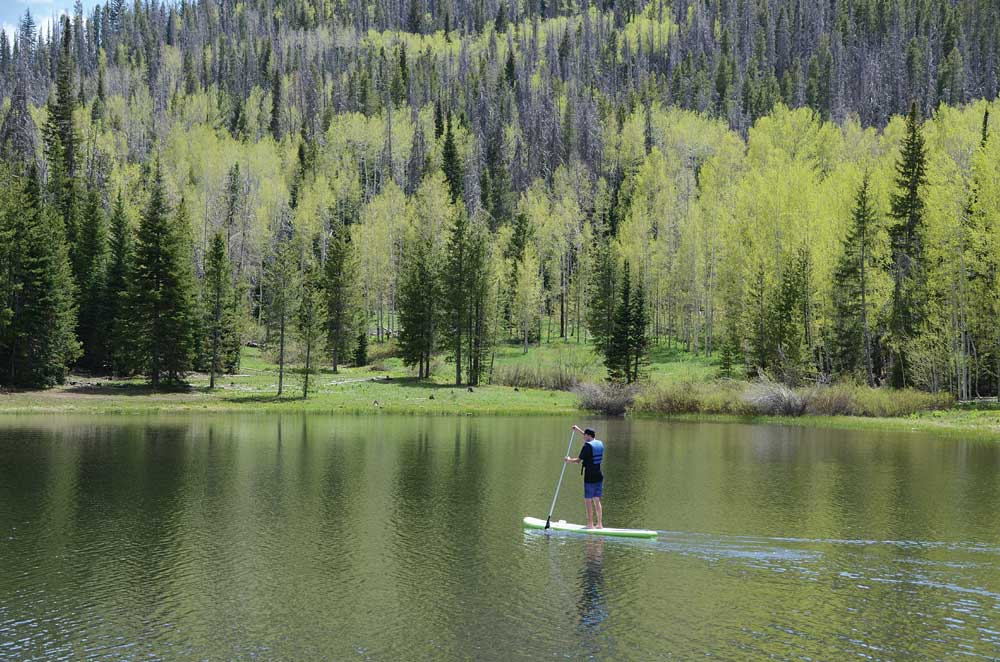
From seashores to alpine lakes, stand-up paddleboards (aka SUPs), have become the go-
to craft for an increasing number of paddlers of all ages for an experience that comes as close as you’ll get to walking on water.
Stand-Up Paddleboards
The stand-up paddleboard is a relatively new creation. In a rough sense, it’s nothing more than an oversize surfboard with tracking fins on its underside that is propelled with a long paddle. When my brother-in-law showed up at our lakeside retreat in New York’s Adirondack Park with an SUP a few years ago, I was skeptical. It’s now one of my favorites for paddling.
Our dog loves it even more. Percy tears down to the shoreline every time the SUP comes out, hopping on when it hits the water in hopes of a ride. He balances perfectly on its prow, scanning the water for ducks or just enjoying the view.
SUPs offer more than just a delightful experience on the water. Their locomotion also provides a whole-body, low-intensity workout that promotes core strength and balance. It takes a little more practice to become comfortable on an SUP than a kayak, but once the basic skills are acquired, the boards are super fun and surprisingly seaworthy, as attested by their surging popularity.
Inflatable SUPs are the ultimate when it comes to stowable watercraft. Many take up about the space of a duffel bag. Rigid SUPs are also very lightweight in relation to other watercraft, and their slim profile makes them easy to transport. They’re easily placed on a roof rack. Some smaller models may fit inside an RV for travel.
Camping lakeside? Be it a canoe, kayak or SUP, a hand-powered watercraft is just the ticket to more fun, better fitness and a boatload of treasured family memories.
RV Rack Packs
Toy-hauling trailers with garages make it easy to take kayaks, canoes and SUPs along, but lately, manufacturers have been coming out with optional rack packages for mounting them on the roof or side of the RV, whether the RV be big or small. On some adventure-oriented models, racks come as standard equipment. Forest River’s Flagstaff Sports Enthusiast Package (shown above) is one example. Permanently mounted crossbars on SE folding trailers secure a wide range of recreational gear.
Where to Paddle
Hand-powered crafts are capable of tackling nearly any type of waterbody if properly chosen. However, you’ll have a more satisfying experience if you’re not constantly on the lookout for motorboats and personal watercraft. The wakes from these can easily capsize smaller craft, not to mention the extreme hazard of a collision.
Ideal locations for lake paddling are those with restrictions on speed and/or motor size for powerboats. Some lakes open to all types of boating are not popular with the motorized crowd, perhaps due to a rough road to the boat launch or other factors, which make them great for paddling.
If you find yourself at a destination with lots of motorized use, paddle at sunrise before the vast majority of motorized users hit the water. Beaches and seashores can also be attractive places to launch with little interference from motorized crafts.
 Rivers, especially smaller streams, tend to see far less motorized use. However, even placid streams sometimes contain dangerous features such as diversion dams for irrigation. Make sure you research the segment of river you plan to paddle beforehand.
Rivers, especially smaller streams, tend to see far less motorized use. However, even placid streams sometimes contain dangerous features such as diversion dams for irrigation. Make sure you research the segment of river you plan to paddle beforehand.
Gearing Up
The following is a sampling of manufacturers that produce useful products for paddling.
Boardworks – SUPs and accessories
Earth River SUP – inflatable SUPs and accessories
Grumman Canoes – canoes
Hobie – kayaks, SUPs and accessories
iRocker – inflatable SUPs and accessories
Isle – SUPs and accessories
Jackson Kayak – kayaks and accessories
Mad River Canoe – canoes and accessories
Native Watercraft – kayaks and accessories
Old Town – canoes, kayaks and accessories
Riot Kayaks – kayaks and accessories
Sea Eagle – inflatable canoes, kayaks, SUPs and accessories
Wenonah Canoes – canoes and accessories
 Jack Ballard, Trailer Life contributor and an award-winning author and photographer, has written hundreds of articles on outdoor recreation topics that have been published in more than 50 different magazine titles. He has also written 13 books. Jack’s first RV was a 1961 Aristocrat camping trailer he bought for $500 in 1989. Although he appreciates the technological advances of modern RVs, he retains a keen interest in vintage units.
Jack Ballard, Trailer Life contributor and an award-winning author and photographer, has written hundreds of articles on outdoor recreation topics that have been published in more than 50 different magazine titles. He has also written 13 books. Jack’s first RV was a 1961 Aristocrat camping trailer he bought for $500 in 1989. Although he appreciates the technological advances of modern RVs, he retains a keen interest in vintage units.

